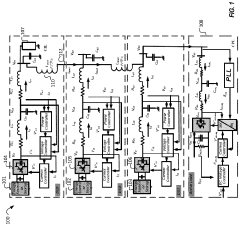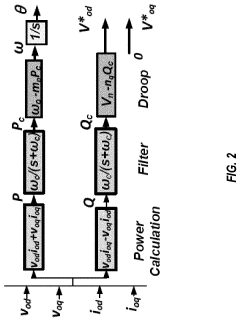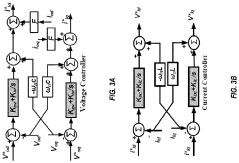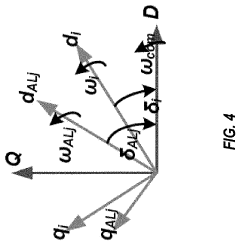Research on distributed and decentralized control architectures - Eureka
OCT 8, 20244 MIN READ
Generate Your Research Report Instantly with AI Agent
Patsnap Eureka helps you evaluate technical feasibility & market potential.
Distributed Control Systems Overview and Goals
The primary objective is to explore the evolution and development trends of distributed and decentralized control architectures, which are crucial for enabling efficient coordination and management of complex systems. This involves examining the historical progression of these architectures, identifying key milestones and breakthroughs, and anticipating future directions and potential disruptive innovations.
By understanding the technological trajectory, we can gain insights into the challenges and opportunities that lie ahead, enabling informed strategic planning and decision-making for organizations seeking to leverage these architectures in their products or services. The analysis should encompass both theoretical advancements and practical implementations, providing a comprehensive view of the current state-of-the-art and potential game-changing developments on the horizon.
By understanding the technological trajectory, we can gain insights into the challenges and opportunities that lie ahead, enabling informed strategic planning and decision-making for organizations seeking to leverage these architectures in their products or services. The analysis should encompass both theoretical advancements and practical implementations, providing a comprehensive view of the current state-of-the-art and potential game-changing developments on the horizon.
Market Demand for Decentralized Control Architectures
- Growing Demand for Decentralized Control Traditional centralized control architectures face challenges in scalability, reliability, and adaptability. Decentralized control offers advantages in distributed systems, IoT, and edge computing.
- Industry 4.0 and Smart Manufacturing The rise of Industry 4.0 and smart manufacturing drives the need for flexible, modular, and reconfigurable control systems that can adapt to dynamic production environments.
- Resilient and Fault-Tolerant Systems Decentralized control architectures provide resilience and fault tolerance, as failures in one component do not affect the entire system, crucial for critical infrastructure and safety-critical applications.
- Edge Computing and IoT The proliferation of edge devices and IoT systems necessitates decentralized control architectures that can process data locally and reduce latency and bandwidth requirements.
- Cyber-Physical Systems and Autonomous Systems Decentralized control is essential for coordinating and managing complex cyber-physical systems and autonomous systems, such as swarm robotics and intelligent transportation systems.
Current State and Challenges in Distributed Control
- Decentralized Architecture Challenges
Lack of global system view and coordination among distributed controllers can lead to suboptimal performance and potential conflicts. - Communication Constraints
Limited bandwidth, delays, and unreliable communication links pose challenges for effective information exchange and synchronization. - Scalability and Complexity
As the number of distributed controllers increases, the system becomes more complex, making it difficult to ensure stability and robustness. - Fault Tolerance and Reliability
Distributed systems must be resilient to component failures and able to maintain operation despite faults or disturbances. - Security and Cyber Threats
Distributed architectures are vulnerable to cyber-attacks, requiring robust security measures to protect data integrity and system operation.
Existing Solutions for Decentralized Control
01 Distributed Control System Architectures
These architectures distribute control functions across multiple controllers or nodes, enabling decentralized decision-making and improved fault tolerance. Examples include hierarchical distributed architectures for vehicle control systems and distributed architectures for multicast access control.- Distributed Control System Architectures: These architectures involve distributing control functions across multiple controllers or nodes in a system, enabling decentralized decision-making and improved fault tolerance. Examples include hierarchical distributed architectures for vehicle control systems and distributed architectures for multicast access control.
- Reconfigurable and Adaptive Control Architectures: These architectures allow for dynamic reconfiguration and adaptation of control systems based on changing requirements or conditions. They often involve intelligent automation and can be applied to various domains, such as robotics and industrial control systems.
- Distributed Control Plane Architectures: These architectures separate the control plane from the data plane, enabling distributed control and management of various systems, such as container orchestration platforms, distributed storage architectures, and blockchain architectures.
- Hierarchical and Multi-Layer Control Architectures: These architectures involve multiple layers or hierarchical levels of control, allowing for different levels of abstraction and decision-making. They can be applied to various domains, such as energy resource management, armament systems, and complex vehicle control systems.
- Distributed Architectures for Control System Development: These architectures facilitate the development and integration of control systems across distributed environments, enabling collaboration and reuse of components. They can involve methodologies, platforms, and tools for system architecture development and modeling.
02 Hybrid and Multi-Agent Control Architectures
These architectures combine multiple control strategies or agents to achieve complex control objectives, involving a combination of centralized and decentralized control elements for flexibility and adaptability.Expand Specific Solutions03 Distributed Architectures for Energy and Automation Systems
These architectures enable efficient coordination and decentralized control of distributed energy resources, automation systems, and industrial control systems.Expand Specific Solutions04 Distributed Storage and Cloud Architectures
These architectures involve distributed storage systems and cloud-based control architectures, enabling scalability, fault tolerance, and efficient data management in distributed environments.Expand Specific Solutions05 Reconfigurable and Adaptive Control Architectures
These architectures allow dynamic reconfiguration and adaptation of control systems based on changing requirements or conditions, enabling flexibility and robustness in complex control scenarios.Expand Specific Solutions
Key Players in Distributed Control Systems
The competitive landscape for "Research on distributed and decentralized control architectures" is characterized by a mix of academic institutions and industry leaders. The industry is in a growth phase with increasing market size driven by the need for more efficient and resilient control systems. Companies like State Grid Corp. of China, Honeywell International Technologies Ltd., ABB Group, and Siemens AG are key players, indicating a high level of technical maturity. Academic institutions contribute significantly to research, pushing innovation in this field.
State Grid Corp. of China
Technical Solution: State Grid Corp. of China has developed a distributed control architecture for smart grids, integrating decentralized control nodes with advanced communication protocols to enhance grid stability and efficiency. The system handles large-scale power distribution networks with real-time monitoring and control capabilities.
Strength: High scalability and real-time control. Weakness: High implementation cost.
Honeywell International Technologies Ltd.
Technical Solution: Honeywell offers a decentralized control system for industrial automation, leveraging edge computing and IoT devices to provide real-time data processing and decision-making at the local level, reducing latency and improving system responsiveness.
Strength: Low latency and high responsiveness. Weakness: Limited to specific industrial applications.
Core Innovations in Distributed Control Technologies
Method for stabilizing an autonomous microgrid including an active load
PatentActiveUS20200343731A1
Innovation
- Integration of dgs with microgrids: the scheme proposes a method to connect dgs with microgrids, allowing for the integration of renewable energy sources at the distribution level. this integration helps to reduce greenhouse gas emissions and combat climate change.
- Stability analysis: the scheme includes stability analysis of the microgrid system, which is crucial for ensuring the reliability and resilience of the grid. by analyzing the stability of the microgrid, the scheme can identify any potential issues and implement control strategies to mitigate small signal instability.
- Power-sharing control: the main objective of the scheme is to achieve accurate power-sharing among dgs in the microgrid. the scheme proposes different centralized and decentralized control schemes to regulate the magnitude and frequency of the microgrid, ensuring optimal power distribution and stability.
- Distributed control: the scheme also introduces distributed control techniques for dgs in microgrids. this allows for flexibility and adaptability, enabling individual control of each dg based on local conditions and reducing the reliance on centralized control systems.
Regulatory and Compliance Considerations
Distributed and decentralized control architectures aim to address the challenges of centralized control systems by distributing decision-making and control across multiple nodes or agents. These architectures offer improved scalability, resilience, and flexibility, making them suitable for complex systems like smart grids, transportation networks, and industrial automation. Key aspects include decentralized algorithms, multi-agent coordination, and robust communication protocols. Potential benefits include enhanced fault tolerance, reduced communication overhead, and better adaptation to dynamic environments. However, challenges such as synchronization, security, and stability must be addressed for successful implementation.
Impact of IoT on Distributed Control Systems
Distributed and decentralized control architectures aim to enhance system resilience, scalability, and flexibility by distributing control functions across multiple nodes or subsystems. These architectures leverage advancements in communication networks, computing power, and control algorithms to enable coordinated decision-making and action execution without relying on a centralized authority. Key advantages include improved fault tolerance, reduced communication overhead, and increased adaptability to dynamic environments. However, challenges arise in ensuring system-wide stability, consistency, and security. Potential research directions involve developing robust coordination mechanisms, optimizing resource allocation, and addressing cybersecurity concerns in distributed control systems.
Unlock deeper insights with Patsnap Eureka Quick Research — get a full tech report to explore trends and direct your research. Try now!
Generate Your Research Report Instantly with AI Agent
Supercharge your innovation with Patsnap Eureka AI Agent Platform!



